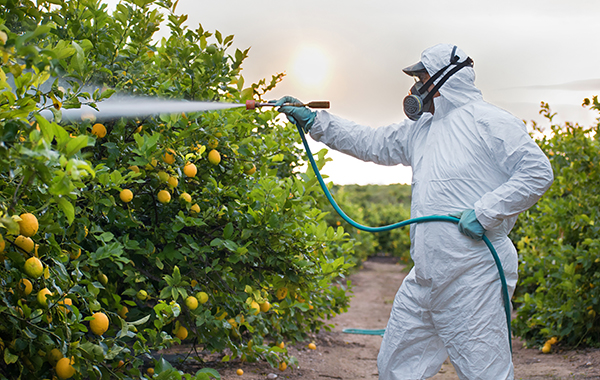
Every year, nearly 90,000 new cases of Parkinson’s are diagnosed. The rate of Parkinson’s has dramatically increased since the 1980s, when the rate of diagnosis was approximately 60,000 people per year. At the current trajectory, there will be 1.2 million people living with Parkinson’s by 2030.
Now, a new study finds that Parkinson’s is more prominent in areas of the country that use greater levels of agricultural pesticides and herbicides. Three of the greatest chemical offenders are atrazine, lindane and simazine.
Geographical study finds higher incidence of Parkinson’s in areas that use atrazine, lindane, simazine
In the geographical study, researchers looked at nationwide data from 21.5 million Medicare beneficiaries who were at least 67 years old in 2009. The study took a closer look at 465 pesticides included in the U.S. Geological Survey and honed in on 65 of the most toxic chemicals. Then, the researchers determined the annual application amount of each pesticide by county between the years 1992 - 2008.
After ruling out county-level air pollution, rural/urban residence, and median income as potential confounding factors, the researchers dialed in on the counties that had a higher use of atrazine, lindane or simazine. These counties were correlated with greater Parkinson’s diagnosis in the Medicare study group. Inhabitants of these high-dose pesticide counties were 25 to 36 percent more likely to develop Parkinson's. This was observed primarily in the Rocky Mountain and Great Plains region of the United States. Agricultural pesticides also contribute to higher Parkinson’s rates in southern California, southeastern Texas, central Pennsylvania and parts of Florida that rely heavily on insecticides. The study will be presented at the 76th annual meeting of the American Academy of Neurology in April.
While simazine, lindane and atrazine were more closely linked to Parkinson’s disease, there were eleven other pesticides that also had a strong association with the disease, and that information has yet to be released. These agricultural chemicals are most used in Colorado, Idaho, Kansas, Montana, Nebraska, Nevada, New Mexico, North Dakota, Oklahoma, South Dakota, Texas, Utah and Wyoming.
The herbicide atrazine, manufactured by Syngenta, is a notorious endocrine disrupting chemical that is sprayed on golf courses, residential lawns and on various crops such as corn, soybeans and sugarcane. In the study, people living in counties with the highest use of atrazine were 31 percent more likely to be diagnosed with Parkinson’s than in counties with the lowest exposure.
Simazine, which is chemically similar to atrazine, is sprayed on lawns to kill weeds. The chemical works by stopping photosynthesis. It remains biologically active for up to seven months. In the study, there were 411 new cases of Parkinson’s for every 100,000 people in counties with the highest exposure to simazine. In counties with the lowest exposure to the chemical, there were 380 new cases. The European Union has banned both of these chemicals, but both remain popular in Canada and the United States.
Lindane is an organochlorine chemical that is sprayed as an insecticide. The production and agricultural use of lindane was banned in 2009 under the Stockholm Convention on persistent organic pollutants, but is still used as an insecticide and as a secondary pharmaceutical to treat scabies and lice. In the study, people living in counties with the highest exposure to lindane were 25 percent more likely to be diagnosed with Parkinson’s.
Working with or near pesticides and herbicides increases risk of developing Parkinson’s
A 2023 UCLA and Harvard study found that cotton farm workers, who are exposed to these pesticides long term, are more likely to develop Parkinson’s later in life. The researchers were able to identify ten pesticides that cause direct harm to specific neurons in the brain that are responsible for voluntary movement. The pesticides caused these neurons to die off, which is the underlying mechanism behind Parkinson’s disease.
One of the most destructive toxins in pesticides is 1-methyl-4-phenyl-1,2,3,6-tetrahydropyridine (MPTP). This neurotoxin, found in pesticides, is structurally similar to paraquat. It causes the brain to deteriorate in the precise areas that control one's motor movement and reward functions. MPTP causes all the telltale signs of Parkinson’s, including tremors, stiffness and slowed movements.
In order to reduce new cases of Parkinson’s disease, farmers will need to phase out many common pesticides and herbicides. This industry-wide phase out will need to be a cooperative effort across multiple counties, states and countries. To reduce incidence of this neurological disease, conventional agriculture will need to be transitioned to include more sustainable, permaculture methods that favor biodiversity, companion planting and manual/automated weed control and biodegradable, non-toxic pest control methods.
Sources include:
AANFiles.blob.core.windows.net
Please contact us for more information.






















